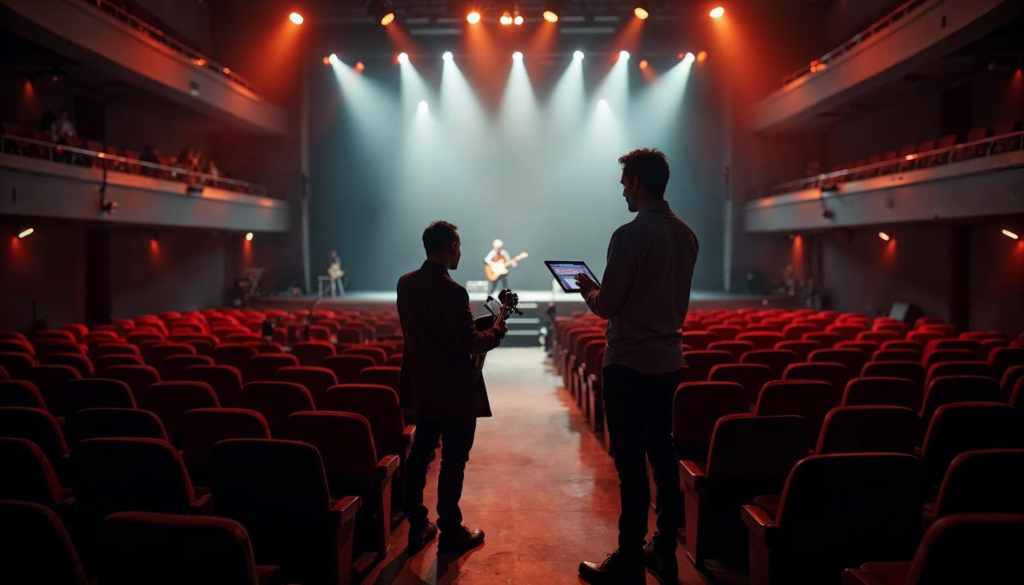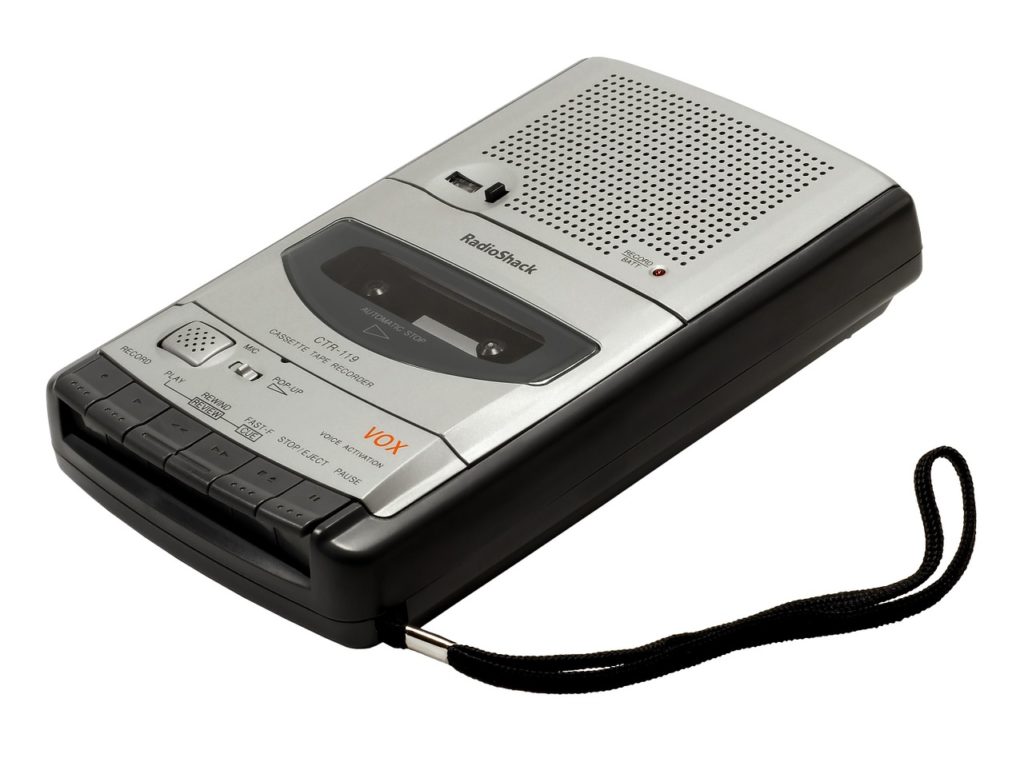
A Complete Guide to Performing Arts Center Management
The curtain rises, the house lights dim, and another spectacular performance begins at your venue. Behind this seamless presentation lies the complex world of performing arts center management, where every detail must be perfectly orchestrated.
In 2025, venue managers face unprecedented challenges in coordinating performances, managing resources, and ensuring financial sustainability. Yet with the right approach and modern tools, these challenges become opportunities for growth and excellence.
Success in performing arts center management requires a delicate balance of artistic vision and operational efficiency. From maximizing venue utilization to streamlining communication channels, each element plays a crucial role in creating unforgettable experiences for both performers and audiences alike. Let’s explore the essential components that will help you master the art of venue management and keep your performing arts center thriving.
Essential Elements of Performing Arts Center Management
Successful performing arts center management relies on several interconnected components working in harmony. Each element requires careful attention and strategic oversight to ensure your venue operates at peak efficiency. From scheduling to financial management, these core aspects form the foundation of a well-run performing arts center.
Strategic Calendar Orchestration
Managing the scheduling of your performing arts center is perhaps the most intricate dance you’ll choreograph. With limited space and unlimited demands, making the most of every square foot becomes an art form in itself. Modern venue management requires a strategic approach that goes beyond simple calendar keeping.
Maximizing Space Utilization
The dream of having dedicated spaces for each performance or group rarely matches reality. Most performing arts centers must transform a single space multiple times daily, accommodating everything from morning rehearsals to evening performances.
This requires precise timing for transitions. Your daily schedule might need to account for load-in windows, technical setup periods, cleaning breaks, sound checks, and rehearsal blocks. Each of these elements must be carefully timed to ensure smooth transitions between events.
Multi-Use Space Coordination
Success lies in the details of coordinating multiple users within the same space. A typical day might find you juggling a local theater company’s technical rehearsal in the morning, a youth orchestra practice in the afternoon, and a touring production’s evening performance. Each transition requires careful planning and clear communication among all parties involved.
Calendar Management Tools
To handle this intricate scheduling dance, you’ll need robust calendar management tools at your disposal. Modern performing arts centers thrive on systems that offer intuitive features like drag-and-drop scheduling and color-coding for different types of events.
The most effective tools also include hold options for tentative bookings and conflict detection to prevent double bookings. Think of these tools as your digital stage manager, keeping every aspect of your schedule running smoothly and on time.
Financial Performance Management
At the heart of every thriving performing arts center lies robust financial management. Today’s venue managers must balance artistic excellence with fiscal responsibility, requiring sophisticated approaches to revenue management and cost control.
Revenue Stream Optimization
Gone are the days when performing arts centers could rely solely on ticket sales to maintain financial health. Today’s successful venues need to think creatively about revenue generation. Beyond traditional ticket sales, consider developing corporate sponsorship programs, educational initiatives, and facility rental opportunities. Many venues find success with membership programs that offer exclusive benefits while providing steady revenue streams.
Let’s look at the key revenue channels that successful performing arts centers typically develop:
- Consider your primary revenue sources: ticket sales, facility rentals, and concessions. These form the backbone of your financial structure.
- Explore supplementary income streams through educational programs and corporate partnerships.
- Don’t overlook the potential of foundation grants and donor contributions to support your artistic mission.
Building a diverse revenue portfolio means creating a sustainable foundation for your artistic vision. When you have multiple revenue streams working together, you’re better positioned to weather economic uncertainties and take creative risks with your programming. Plus, each revenue channel creates new opportunities to engage with your community and strengthen your venue’s position as a cultural cornerstone.
Financial Integration and Reporting
Modern performing arts center management demands sophisticated financial tools that can handle complex transactions while providing clear insights into your venue’s financial health. Think of your financial management system as the central nervous system of your operation. It should connect every aspect of your business, from ticket sales to vendor payments, providing real-time data that helps you make informed decisions.
The most effective financial systems go beyond basic bookkeeping. They integrate with your ticketing platform, track expenses automatically, and generate detailed reports that help you understand your venue’s financial performance at a glance. This level of integration means you can spend less time on administrative tasks and more time focusing on what matters most: creating exceptional experiences for your audiences.
Team Communication and Coordination
Running a performing arts center is like conducting an orchestra—every section needs to work in perfect harmony. Your staff, performers, volunteers, and external partners all play crucial roles in creating successful events. But unlike an orchestra performing on stage, your team members aren’t always in the same room at the same time.
Cross-Departmental Alignment
Think about a typical day at your venue: your technical crew might be setting up for tonight’s show while your marketing team promotes next month’s events and your education department runs a workshop in another space. Meanwhile, your front-of-house staff is preparing for tonight’s audience, and your development team is meeting with potential donors. Each department needs different information, but they all need to be moving toward the same goals.
The key to keeping everyone in sync lies in creating clear communication channels and protocols. Your technical director needs to know about last-minute program changes just as much as your box office staff does. Your marketing team needs updates about upcoming events just as much as your production team does. This is where modern venue management tools become invaluable.
Digital Collaboration Solutions
Today’s performing arts centers operate in both physical and digital spaces. Your team needs access to important information whether they’re in the booth, at home, or on the road. Cloud-based management systems have revolutionized how venues handle internal communication. They allow your staff to access show information, technical riders, scheduling updates, and other crucial details from any device, at any time.
Consider how this plays out in practice: A touring company sends updated technical requirements for next week’s show. Instead of this information sitting in one person’s email inbox, it can be immediately available to your entire technical team.
Your front-of-house manager updates the running time of tonight’s performance—this information instantly reaches your box office staff, parking attendants, and backstage crew. This level of seamless communication doesn’t just make your team more efficient; it helps prevent the kind of miscommunications that can derail an otherwise perfect event.
Technical Production Management
Behind every successful performance lies a well-oiled technical operation. While audiences see the magic on stage, it’s your technical team that makes that magic possible. From managing complex equipment inventories to coordinating precise production schedules, technical management forms the backbone of your venue’s operations.
Equipment and Infrastructure
Your venue’s technical infrastructure represents a significant investment that needs careful management. Think of your equipment inventory as a living document—it’s constantly evolving as you add new gear, retire old pieces, and track maintenance needs. A sophisticated venue management system helps you keep tabs on everything from moving lights and sound equipment to rigging hardware and stage materials.
Modern venues need to track not just what equipment they have, but how it’s being used. Is that new digital console booked for next week’s symphonic performance? Does the lighting rig need maintenance before the dance festival? Having this information readily available helps prevent scheduling conflicts and ensures your equipment is always performance-ready.
Production Timeline Coordination
Every show brings its own unique technical requirements and challenges. Your touring Broadway show might need three days of load-in and technical rehearsals, while a local dance recital might only need a few hours of setup time. Managing these varying needs requires careful coordination and clear communication with all parties involved.
A well-structured technical management system helps you create and maintain detailed production schedules. It should track everything from load-in times and technical rehearsals to specific crew calls and equipment needs. The best part? When this information is integrated with your main calendar system, everyone stays informed about what’s happening in your space at any given time.
Safety and Compliance
Safety in technical operations isn’t just about following regulations – it’s about creating an environment where creativity can flourish without compromise. Your technical management system should help you maintain regular safety checks, track certification requirements, and document any incidents or concerns. This attention to detail not only protects your team and performers but also helps manage liability and insurance requirements.
Consider developing a comprehensive safety protocol that includes regular equipment inspections, staff training records, and emergency procedures. When these protocols are built into your management system, they become part of your venue’s daily operations rather than an afterthought. This systematic approach helps ensure that every performance runs smoothly while maintaining the highest safety standards.
Mastering the Front-of-House Experience
While backstage operations keep your venue running smoothly, the front-of-house experience is what your patrons will remember. Creating memorable experiences for your audience goes far beyond just what happens on stage – it encompasses every interaction from the moment they decide to attend an event to their final steps out of your venue.
Creating Seamless Patron Journeys
The patron journey begins long before the curtain rises and continues well after it falls. Modern performing arts center management means crafting each touchpoint with care – from the first ticket purchase to the final bow. Digital ticketing systems should integrate smoothly with your venue management software, making it easy for your team to handle everything from seat assignments to special accessibility requirements with grace and efficiency.
Your front-of-house staff becomes the face of your venue, so they need quick access to show information, seating charts, and patron notes at their fingertips. Whether they’re accommodating last-minute seating changes or handling VIP requests, having this information readily available helps create those smooth, professional interactions that turn first-time visitors into loyal patrons.
Taking Your Venue Management to the Next Level
Success in performing arts center management comes down to having the right systems in place to support your team’s hard work. The most effective venues are those that can seamlessly coordinate all these moving parts – from calendar management to technical operations to audience experience – while maintaining clear communication throughout.
As the performing arts landscape continues to evolve, staying competitive means embracing tools that can help you streamline operations and enhance both the performer and patron experience. The right venue management software can transform your day-to-day operations, helping you focus less on administrative tasks and more on creating exceptional artistic experiences.
Ready to elevate your performing arts center management? Prism offers a comprehensive solution designed specifically for performing arts venues. Our platform integrates all the essential elements we’ve discussed – from calendar management to financial tracking to audience experience enhancement – in one intuitive system. Schedule a demo today to see how Prism can help your venue thrive.

Matt Ford is the founder and CEO of Prism.fm, an Austin-based software company revolutionizing live music event management. With a background in entrepreneurship and a degree from the University of Wisconsin-Madison School of Business, Ford combined his self-taught coding skills with firsthand experience as a concert promoter to address the inefficiencies he observed in the industry. In 2018, he launched Prism.fm, an all-in-one platform designed to streamline operations for venues, promoters, and agencies by replacing cumbersome spreadsheets with integrated tools for booking, financial tracking, and contract management. Under his leadership, Prism.fm has grown significantly, achieving $3 million in annual recurring revenue post-COVID and securing over $15 million in funding . Ford’s commitment to building user-centric solutions has positioned Prism.fm as a trusted partner for over 1,500 venues and promoters worldwide.



